Today Current Affairs: 16th April 2022 for UPSC IAS exams, State PSC exams, SSC CGL, State SSC, RRB, Railways, Banking Exam & IBPS, etc
Table of Contents
First Long Range Forecast (LRF) For 2022 : IMD
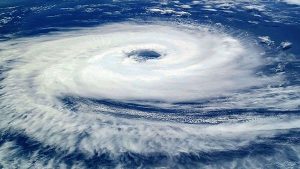
The India Meteorological Department (IMD) released its first Long Range Forecast (LRF) for 2022 which says that the country is likely to receive a normal monsoon for the fourth consecutive year.
- While forecasting a ‘normal’ southwest monsoon for this year, IMD also revised downwards the definition of what constitutes average rainfall.
- Every year, the IMD issues a two-stage forecast: the first one in April and the second one in the last week of May, which is a more detailed forecast and also illustrates how the monsoon will spread over the country.
Highlights of the Forecast:
- India will get Normal Monsoon:
- India would get 99% of the Long Period Average (LPA) rainfall — changed from 89 cm to 88 cm in 2018, and in the periodic update in 2022, again revised to 87 cm.
- A monsoon is considered “normal” when rainfall falls between 96% and 104% of the LPA.
- The IMD does not expect an El Nino but currently La Nina conditions are prevailing over the equatorial Pacific which will continue during the monsoon.
- El Nino is a phenomenon associated with a warming of the Central Pacific and drying up of the rains over northwest India, the coming monsoon.
- La Nina events represent periods of below-average sea surface temperatures across the east-central Equatorial Pacific.
- It is indicated by sea-surface temperature decreased by more than 0.9℉ for at least five successive three-month seasons.
“Normal” to “above Normal” Rainfall: - Current indications suggest “normal” to “above normal” rainfall in the northern parts of peninsular India, central India and the Himalayan foothills.
- Many parts of northeast India and southern parts of South India are expected to see a subdued monsoon.
Long Period Average (LPA):
- According to the IMD, the “LPA of rainfall is the rainfall recorded over a particular region for a given interval (like month or season) averaged over a long period like 30 years, 50 years, etc”.
- The IMD predicts a “normal”, “below normal”, or “above normal” monsoon in relation to a benchmark “Long Period Average” (LPA).
- The IMD has in the past calculated the LPA at 88 cm for the 1961-2010 period, and at 89 cm for the 1951-2000.
- It calculated the LPA at 87 cm for the 1971-2020 period.
India Meteorological Department (IMD):
- IMD was established in 1875.
- It is an agency of the Ministry of Earth Sciences.
- It is the principal agency responsible for meteorological observations, weather forecasting and seismology.
Neptune: Anti-Ship Cruise Missile

Ukraine claimed that it has damaged the Russian Black Sea Fleet Flagship ‘Moskva’ by Neptune Anti-Ship Cruise Missiles.
- The Neptune is a coastal anti-ship cruise missile that is capable of the destruction of naval vessels in a range of 300 km.
- The Missile system was inducted into the Ukrainian Defence Forces in March 2021 after being in development for six years.
- The cruise missile was developed in haste by the military as the Russian threat to the coastal areas of Ukraine was growing rapidly since the occupation of Crimea in 2014.
- The design of this missile is based on a Russian Kh-35 cruise missile which goes by the North Atlantic Treaty Organization (NATO) name of AS-20 Kayak.
- The cruise missile attack was carried out using TB-2 drones as decoys along with other measures toward saturation of the cruiser’s Air Defence systems.
- Moskva is a guided missile cruiser of the Russian Navy named after the city of Moscow.
- A cruiser is a large surface warship built for high speed and great cruising radius, capable of not only defending its own fleet and coastlines but also threatening those of the enemy.
- The Moskva was originally commissioned as the Slava in 1983.
- It was recommissioned in 2000 as the Moskva with refurbished weapon systems and electronics.
- It has a displacement of 12,490 tons.
- It is the flagship of the Black Sea Fleet of the Russian Navy and carries a crew of around 500 personnel.
Palmking : Rare Butterfly Sighted In Tamil Nadu

The rare butterfly Palmking (Amathusia phidippus) was sighted for the first time in Tamil Nadu.
- It is the 321st species of butterfly found in Tamil Nadu among the 1,500 species in India.
- Palmking was first recorded in South India by British scientist H.S.Ferguson in 1891. More than a Century later, it was rediscovered in 2007.
- Palmking belongs to the Nymphalidae subfamily and feeds on palm, coconut and calamus varieties of plants.
- The butterfly is characterised by its brown colour and dark bands and is described as reclusive, mostly resting in the shade.
- It is not easy to spot a Palmking because its wood colour makes for easy camouflage and it rarely spreads its wings.
- This butterfly is widely distributed across parts of India, Myanmar, Indo China, Peninsular Malaysia and Thailand.
- It occurs in the Indonesian archipelago and the Philippines.
- In India, Palmking sightings were recorded in the forests of Arippa, Shendurney, Periyar Tiger Reserve in the south of Western Ghats.
Lynching a Federal Hate Crime : US

U.S. President Joe Biden has signed a bill into law to make lynching a federal hate crime, more than 100 years after such legislation was first proposed.
- The Emmett Till Anti-Lynching Act is named after the Black teenager whose killing in Mississippi in the summer of 1955 became a galvanising moment in the civil rights era.
- The new law makes it possible to prosecute a crime as a lynching when a conspiracy to commit a hate crime leads to death or serious bodily injury.
- The law lays out a maximum sentence of 30 years in prison and fines.
- In 2021 in Assam, a 23-year-old student leader was allegedly killed by a mob.
- In October 2021 a man was allegedly lynched, his limbs cut off and left to die at the Singhu Border, site of the farmers’ protest against the three farm laws.
- In August 2021, a bangle seller in Indore was reportedly beaten up by a mob for allegedly hiding his identity.
- The man survived and was sent to judicial custody.
- In May 2021, a 25-year-old Gurugram man was allegedly lynched when he went out to buy medicines.
- On December 18 2021, a man was lynched to death by the Sikh Sangat (Sikh devotees) in Shri Harmandir Sahib Gurudwara (Golden Temple) in Amritsar over an alleged attempt to disrespect the holiest book of Sikh religion, Shri Guru Granth Sahib Ji.
Lynching:
- Any act or series of acts of violence or aiding, abetting (encouraging) such act/acts thereof, whether spontaneous or planned, by a mob on the grounds of religion, race, caste, sex, place of birth, language, dietary practices, sexual orientation, political affiliation, ethnicity or any other related grounds.
- There is “no separate” definition for such incidents under the existing IPC. Lynching incidents can be dealt with under Section 300 and 302 of IPC.
- Section 302 provides that whoever commits murder shall be punished with death or imprisonment for life and shall also be liable to fine. Offence of murder is a cognisable, non- bailable and non-compoundable offence.
- There should be a “separate offence” for lynching and the trial courts must ordinarily award maximum sentence upon conviction of the accused person to set a stern example in cases of mob violence.
- The state governments will have to designate a senior police officer in each district for taking measures to prevent incidents of mob violence and lynching.
- The state governments need to identify districts, sub-divisions and villageswhere instances of lynching and mob violence have been reported in the recent past.
- The nodal officers shall bring to the notice of the DGP about any inter-district co-ordination issues for devising a strategy to tackle lynching and mob violence related issues.
- Every police officer shall ensure to disperse the mob that has a tendency to cause violence in the disguise of vigilantism or otherwise.
- Central and the state governments shall broadcast on radio, television and other media platforms about the serious consequences of mob lynching and mob violence.
- Despite the measures taken by the State Police, if it comes to the notice of the local police that an incident of lynching or mob violence has taken place, the jurisdictional police station shall immediately lodge an FIR.
- The State Governments shall prepare a lynching/mob violence victim compensation scheme in the light of the provisions of Section 357A of CrPC.
- If a police officer or an officer of the district administration fails to fulfill his duty, it will be considered an act of deliberate negligence.
What Are Flexible Fuel Vehicles (FFVs)?
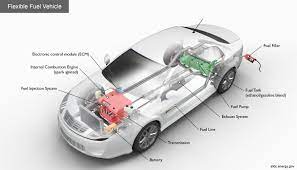
The Indian Sugar Mills Association (ISMA) has called for a faster launch of flex-fuel vehicles (FFVs) to achieve 20 per cent of ethanol blending.
- An FFV is a modified version of vehicles that could run both on gasoline and doped petrol with different levels of ethanol blends.
- FFVs will allow vehicles to use all the blends and also run on unblended fuel.
- FFVs have compatible engines to run on more than 84 percent ethanol blended petrol.
- FFVs are aimed at reducing the use of polluting fossil fuels and cutting down harmful emissions.
- Alternative fuel ethanol is Rs 60-62 per litre while petrol costs more than Rs 100 per litre in many parts of the country, so by using ethanol, Indians will save Rs 30-35 per litre.
- For India, FFVs will present a different advantage as they will allow vehicles to use different blends of ethanol mixed petrol available in different parts of the country.
- Also, these vehicles are a logical extension of the Ethanol Blended Petrol (EBP) programme launched by the Union Ministry of Petroleum and Natural Gas in January 2003.
- Since India has surplus produce of corn, sugar and wheat, the mandatory blending of ethanol programme will help farmers in realising higher incomes.
- For the overall Indian economy, higher usage of ethanol as an automobile fuel will help save import costs as the country meets more than 80 per cent of its crude oil requirements through imports.
Sabka Vikas Mahaquiz Series:
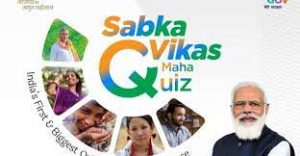
MyGov under the Ministry of Electronics and Information Technology is organising the Sabka Vikas Mahaquiz Series, which is part of an outreach effort to build awareness in citizens.
- The quiz aims to sensitise the participants about the various schemes and initiatives and how to avail the benefits.
- This quiz has been fittingly launched on the birth anniversary of Bharat Ratna Dr Babasaheb Bhimrao Ambedkar on 14th April 2022.
- Under this, the first quiz is the Pradhan Mantri Garib Kalyan Anna Yojana (PMGKAY) under the Ministry of Consumer Affairs, Food and Public Distribution.
- Under the scheme, all National Food Security Act (NFSA) beneficiaries are entitled to 5 kgs of free food grain every month. This is over and above the highly subsidised food grains available to NFSA beneficiaries.
- The scheme has been successful in keeping extreme poverty low during the pandemic and has been praised in a working paper prepared by the International Monetary Fund (IMF).
Exemption Of Customs Duty On Cotton Import:
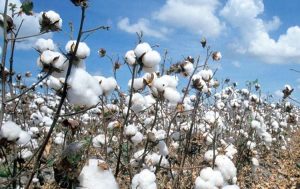
Government has exempted the import of cotton from customs duties from today to 30th of September this year.
- Ministry of Finance has issued a notification in this regard saying that the exemption on cotton import will come into effect from 14th April and remain in force till 30th of September, 2022.
- The exemption will benefit the textile chain-yarn, fabric, garments and made-ups and will also provide relief to consumers. Textile exports are also to be benefitted from this move.
- Previously, the import of cotton attracted a 5 percent basic customs duty and another 5 percent Agriculture Infrastructure Development Cess (AIDC).
UNDP Climate Action Grants:
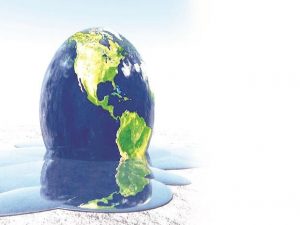
USD 2.2 million in climate action funding has been announced by the United Nations Development Programme (UNDP) and partners of the Adaptation Innovation Marketplace (AIM) for 22 local innovators from 19 countries, that also includes India.
- The first round of funding of the Adaptation Fund Climate Innovation Accelerator (AFCIA) window will be looking to improve local climate action and speed up the achievements of the Sustainable Development Goals and the Paris Agreement’s ambitions.
- The project will be enabling the local organizations and will be contributing to UNDP and its partners across the world for locally-driven adaptation action.
- Adaptation Innovation Marketplace will be providing technical support for all the new funding applications launched.
- In January 2021, AIM was launched by Achim Steiner, the UNDP Administrator at the Climate Adaptation Summit.
- It is a strategy platform that promotes localized scaled-up adaptation on non-governmental organizations, civil society, youth innovators, and women.
- AIM brings together knowledge, resources, and assistance with the aim of making the financing of local climate change more accessible.
- The partners of AIM such as the Least Developed Countries Universities Consortium on Climate Change, the International Centre for Climate Change and Development, the Climate-Knowledge Innovation Community, the Global Resilience Partnership, and the UN Capital Development Fund (UNCDF) provide technical support to the Adaptation Fund Climate Innovation Accelerator.
- The partners of AIM will be continuing to work together on South-South coordination and knowledge sharing for the 22 local partners that received monetary support in the AFCIA grant’s first round.
- The partners will be working on advanced aquaculture in India, reintroduction of historic climate-resilient construction techniques in the Sahel, increasing production of climate-resilient acai berries in Brazil, and establishment of “blue jobs” in Micronesia.
India Has Been Elected To The United Nations Economic And Social Council’s (ECOSOC) Four Major Bodies:
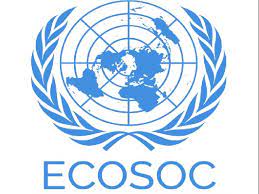
India has been elected to the United Nations Economic and Social Council’s (ECOSOC) four major bodies, including the Commission on Science and Technology for Development.
- To the Committee for Economic, Social and Cultural Right, Ambassador Preeti Saran has been re-elected.
- In 2018, she was first elected to the Asia Pacific seat on the UN’s Committee on Economic, Social, and Cultural Rights.
- On 1st January 2019 her first four-year term began.
- The 4 bodies to which India has been elected
- The Committee on Economic, Social, and Cultural Rights
- The Commission for Social Development
- The Committee on Non-Governmental Organisations
- The Commission on Science and Technology for Development
- The Commission for Social Development (CSocD), since the World Summit for Social Development that was held in Copenhagen, has become the United Nation’s key body in charge of the implementation and follow-up of the Copenhagen Declaration and Programme for Action. The CSocD’s purpose is to advise ECOSOC on various social policies along with pieces of advice on all social field-related matters that are not covered by the specialized inter-governmental agencies.
- Committee on Non-Governmental Organisations is ECOSOC’s standing committee and was established in 1946. The committee’s main tasks include considering petitions for consultative status and reclassification requests that are submitted by non-governmental organizations.
Human Rights Report On India 2021: US

The US State Department released a strong and critical report on human rights in India in 2021.
- The report is submitted each year to the US Congress which is retrospective and contains a country-wise discussion of the state of internationally recognised individual, civil, political and worker rights, as set forth in the Universal Declaration of Human Rights and other international agreements.
- In December 2021, data related to human rights violations in states was provided by the Ministry of Home Affairs in Rajya sabha.
Highlights of the Report:
- Indian law “prohibits arbitrary arrest and detention but both occurred during the year”, with police using “special security laws to postpone judicial reviews of arrests”.
- Pretrial detention was arbitrary and lengthy, sometimes exceeding the duration of the sentence given to those convicted.
- Citing media reports on journalists being targeted for surveillance through the Pegasus malware, the report flagged violations of privacy by government authorities, “including the use of technology to arbitrarily or unlawfully surveil or interfere with the privacy of individuals”.
- The report highlighted instances in which the government or actors considered close to the government allegedly pressured or harassed media outlets critical of the government, including through online trolling.
- It detailed the government’s order of February, 2021 directing Twitter to block accounts of journalists covering protests against the three (later repealed) farm laws.
- The report highlighted the cases of Amnesty International India, whose assets were frozen by the Enforcement Directorate, and the suspension of the Foreign Contribution (Regulation) Act (FCRA) license of Commonwealth Human Rights Initiative (CHRI) for alleged violations.
Human Rights:
- These are rights inherent to all human beings, regardless of race, sex, nationality, ethnicity, language, religion, or any other status.
- These include the right to life and liberty, freedom from slavery and torture, freedom of opinion and expression, the right to work and education, and many more.
- Nelson Mandela had stated ‘To deny people their human rights is to challenge their very humanity’.
Modernisation Of Prisons Project:

The Ministry of Home Affairs (MHA) has issued guidelines to states and Union Territories asking them to Modernize Prisons under the Modernisation of Prisons Project.
- The Government of India has decided to provide financial assistance to States and UTs, through the Project for using modern-day security equipment in Prisons for:
- To facilitate the task of reformation and rehabilitation of prisoners through correctional administration programmes.
Duration: The duration of the project is for five years – 2021-26. - The Central Government will provide Grant in aid to States and UTs for implementation of the project.
- Grants-in-aid are payments in the nature of assistance, donations or contributions made by one government to another government, body, institution or individual.
- MHA shall provide funds to States/UTs depending upon the number of prisons in a State/UT, number of prison inmates, jail staff, etc.
- The proposal of funding will be decided by the Steering Committee constituted for implementation of the modernization of prisons project.
- The project will cover all States and Union Territories and shall broadly cover the following prison types- Central Jails, District Jails, Sub-Jails, Women Jails, Open Jails, Special Jails etc.
- Objectives of the Scheme:
- Filling the existing gaps in security infrastructure of jails.
- Providing new security equipment to jails in line with modern day technologies.
- Strengthening the jail security system through security equipment like Door Frame/ Metal Detectors/ Security Poles, Baggage Scanners/ Frisking/ Search/ Jamming Solutions etc.
- Focus on correctional administration, which includes bringing attitudinal change in the mindset of prison officials handling inmates through extensive training and by introducing appropriate programs for inmates for their skill development and rehabilitation, including engagement of trained correctional experts, behavioural experts, psychologists, etc.




